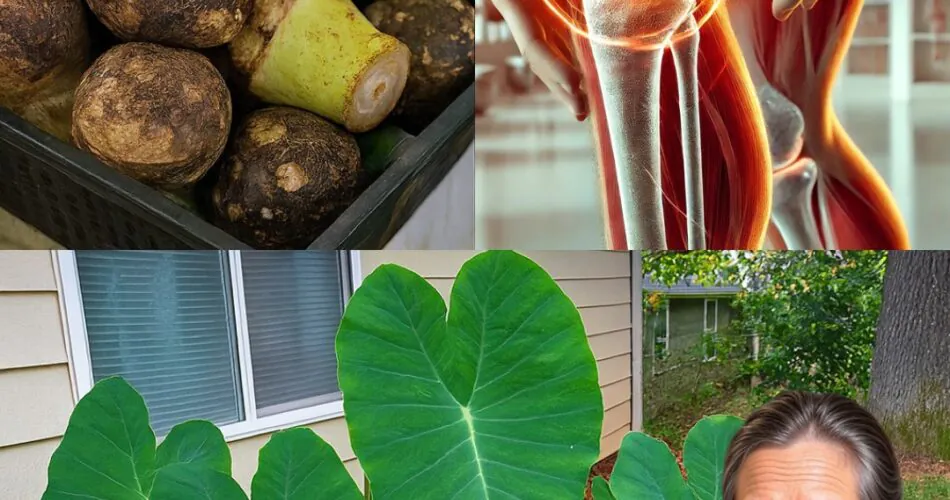What if the secret to vibrant health and sustainability has been hidden underground for thousands of years?
Meet taro — the ancient root quietly fueling generations across the globe. Known scientifically as Colocasia esculenta, this humble plant is now stepping into the spotlight as one of the most powerful, sustainable, and versatile superfoods on Earth. From its rich heritage to its health-boosting nutrients, taro isn’t just food — it’s a movement toward better living.
🌏 A Timeless Legacy
Taro’s story began over 10,000 years ago, making it one of humanity’s oldest cultivated crops. Originating in the lush wetlands of Southeast Asia, it journeyed across oceans to the Pacific Islands, Africa, and the Caribbean.
Known as kalo in Hawaii, dasheen in the Caribbean, and arbi in South Asia, taro has nourished countless cultures. Beyond survival, it became a symbol of resilience, fertility, and connection to the earth.
Today, as the world seeks sustainable, nutrient-dense foods, taro is making a powerful comeback — ancient wisdom meeting modern wellness.
💪 Nutritional Powerhouse: Why Taro Deserves a Place on Your Plate
Taro root is often called “the hidden gem of root vegetables” — and for good reason. It’s packed with vital nutrients your body craves for lasting health and energy.
🥔 Sustained Energy Source
Taro’s complex carbohydrates digest slowly, providing steady energy without the spikes and crashes of refined starches. Perfect for busy days or athletic performance.
🌾 High in Dietary Fiber
The rich fiber content supports gut health, balances blood sugar, and promotes fullness, making taro an ally for weight management.
💎 Loaded with Vitamins and Minerals
Taro is bursting with vitamin C, vitamin E, potassium, magnesium, and manganese — nutrients essential for heart function, bone health, and immunity.
❤️ Naturally Low in Fat
It’s light, heart-friendly, and a perfect fit for clean-eating lifestyles.
🌾 Gluten-Free Goodness
For anyone sensitive to gluten, taro offers a nutrient-rich alternative to wheat, ideal for creating wholesome, satisfying dishes.
🍽️ Culinary Magic: Endless Ways to Enjoy Taro
Taro’s mild sweetness and creamy texture make it an incredibly versatile ingredient. Whether you crave comfort food or gourmet flair, taro delivers.
🥣 Boiled or Steamed: Simple, soft, and nutritious — enjoy with dips, herbs, or sauces.
🍟 Fried or Roasted: Transform into golden taro fries or crispy chips for a guilt-free treat.
🍛 Taro Mash: A silky, flavorful twist on mashed potatoes.
🍲 Curries and Soups: Absorbs spices beautifully, enriching every bite.
🍰 Desserts: From taro ice cream to velvety puddings, it’s a star in Asian sweets.
⚠️ Always cook taro thoroughly — raw taro contains calcium oxalate, which can irritate the skin and throat.
🌿 The Hidden Treasure: Taro Leaves
While the root gets the fame, taro leaves are equally powerful. Packed with vitamins A and C, iron, and calcium, they’re a true supergreen once cooked properly.
🍃 Laing (Philippines): Taro leaves simmered in creamy coconut milk and spices.
🍃 Stuffed Taro Rolls: Filled with rice or veggies — delicious and nutrient-dense.
🍃 Soups and Stews: Adds a hearty texture and deep green vitality.
When cooked well, the leaves lose their natural bitterness and reveal a delicate, earthy flavor. They’re proof that taro is a zero-waste plant — nourishing from root to leaf.
❤️ Beyond Nutrition: Taro’s Healing Touch
Taro doesn’t just feed your body — it nurtures your entire being.
💗 Supports Heart Health
The potassium in taro helps balance blood pressure, while its fiber lowers cholesterol naturally.
🩸 Manages Blood Sugar
Its low glycemic index and resistant starch stabilize glucose levels — ideal for those managing diabetes.
🛡️ Boosts Immunity
With antioxidants like vitamin E and beta-carotene, taro strengthens the body’s defenses against illness.
✨ Enhances Skin Health
Taro’s antioxidants aid in cell repair and reduce signs of aging, giving your skin a healthy, youthful glow.
🌺 Taro in Ancient Healing Traditions
Throughout history, taro has been revered as both food and medicine.
🌿 Ayurveda: Taro paste is applied to soothe skin irritations and wounds.
🌊 Pacific Islands: Considered sacred, taro symbolizes life, fertility, and harmony.
🌸 Traditional Chinese Medicine: Used to strengthen the spleen and improve digestion, promoting internal balance.
Every culture that embraced taro recognized it as a gift from nature — both sustenance and spiritual nourishment.
🌱 Sustainability and the Future of Food
Taro stands as a model of sustainable agriculture. It grows abundantly in wetlands and marginal soils, requiring fewer resources than most staple crops.
Its resilience makes it a lifeline in regions facing climate change, drought, or soil degradation. And because every part of the plant is edible — from root to leaf — taro contributes to a zero-waste food system.
Choosing taro isn’t just healthy — it’s an act of environmental responsibility.
🥄 How to Bring Taro Into Your Everyday Life
Ready to make taro part of your lifestyle? Start simple:
🌰 Begin with Basics: Try boiled taro or a soothing taro soup.
🍵 Experiment: Create taro lattes, pancakes, or even taro bread.
🍨 Get Creative: Whip up taro desserts — from bubble tea to custard.
🌾 Use Taro Flour: A perfect gluten-free alternative for baking that adds flavor and nutrition.
Once you taste its subtle sweetness and feel its nourishing energy, taro will quickly earn a permanent place in your kitchen.
🌕 A Root That Stands the Test of Time
Taro isn’t just a root vegetable — it’s a living legacy, a symbol of endurance, healing, and connection to the earth.
In every culture it touched, taro provided strength and sustenance. Today, it’s being rediscovered as a modern superfood for those seeking health, balance, and sustainability.
So the next time you see this unassuming purple root, remember: you’re looking at an ancient gift — one that continues to nourish the future.
